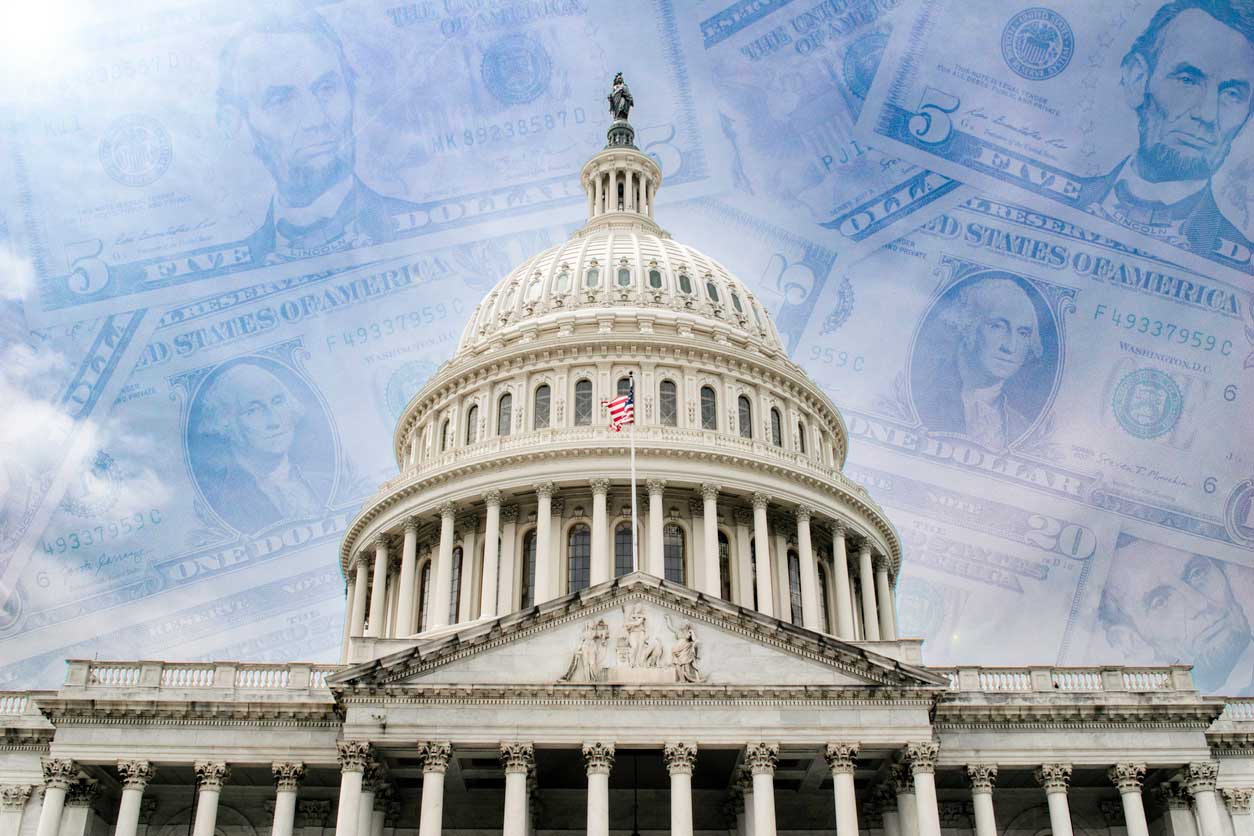Last year, 2023, saw a wide spectrum of economic, political, and market dynamics at work. This unusual mix of factors produced a surprisingly positive result at yearend as several market indexes, particularly the S&P 500, returned to “record territory.” With this in mind, it is also reasonable to hold an optimistic view of the prospects for continued growth in 2024. I have held that the stock market is the best long-term indicator of future economic activity, as the market itself is a daily referendum on the future. If you are optimistic. you buy. If pessimistic, you sell. Hence, billions of votes are cast daily in the form of buying or selling for an expectation of the future. Since, the market typically looks 9-12 months ahead, it is telling us that there is good reason to expect good returns in 2024. Let’s now look closer at the key areas that will shape the year ahead: the economy, the political landscape, emergent technologies, and then finally the markets.
The Economy
Clearly, there has been one single factor that emerged following the pandemic’s stimulus packages and that is inflation. In 2023, we endured inflation rates not seen since the 1980s. The inflationary effect was felt across the economic spectrum, but especially among the millions of workers that comprise the backbone of the American economy. Everything for a gallon of gas, to a gallon of milk, rose dramatically in price, greatly affecting the spending power of the average American. Despite a tight labor market and rising wages, it has been a losing proposition for working Americans. Rapidly rising interest rates also affected the ability of most to buy a home (the American dream) and experience an overall increase in the standard of living. For the wealthy, inflation has a far less devastating effect because the basics of gas and groceries are not a substantial portion of the household budget. But inflation also has an unexpected effect on this group, by undermining business confidence for the future to decades-long lows.
The classical signals of a recession have all been present for much of the past year. An inverted yield curve (short-term interest rates are higher than long-term rates), accelerating commodity prices, and finally the sharp ascent of interest rates. All three have been present this past year, yet without an “official” recession – yet. It could be argued that the economy slowed substantially towards the end of 2023, that a “pseudo” recession actually did occur. Many of the big tech companies like Apple, Microsoft, Meta and others laid off thousands of workers as they sought to cut costs and ensure profits. The leftover savings of the consumer and cash still being abundant within the economy diminished the harsh effects of a classical recession with high unemployment, and the economy in general grinding to a halt. While a recession is still very possible this year, it is likely to be shallow and brief, verses deep and long like the “Great Recession” of 2007-2009.
The Political Landscape
Closely tied to the economy is the political landscape, particularly in a Presidential election year. I will not write this commentary from a partisan, but an economic perspective. The deepening political divide in America has economic consequences as two distinctly different views of the future are being put forth. This is not an uncommon choice in an election year, but what is particularly troubling is that each of the two leading candidates brings with them legal, medical, and character issues, that obscure the vision each has for the future. In addition, the two political parties essentially have a stalemate in Congress, so neither party has a clear mandate from the voter for the future. Each party and their presumed “standard bearers” have failed to win the argument with the American voter, so we continue to suffer through chronic political bickering and petty infighting.
The one issue that relentlessly moves on despite the politics of the day is the rising national debt, which recently hit $34T, exceeding the Gross Domestic Product (GDP) by a wide margin. It has been held that as long as the economy is expanding more rapidly than the debt, we are okay. It’s like being able to afford a bigger mortgage as your income improves. But, when the mortgage is unaffordable for a sustained period, eventually the homeowner faces foreclosure and the loss of their home. What will the voter face? Potentially, the greatest economic risk to the U.S. and world economies has its roots in the political calculus of 2024.
Emergent Technologies
Like I stated earlier, the stock market is an excellent economic forecaster, but it is also a good predictor of emergent technologies. Not many years ago, trillion-dollar companies (or almost trillion-dollar companies) like Microsoft, Tesla, and Apple, were start-ups with founders who had insight on developing technologies and a clear view of the future.
Bill Gates of Microsoft made the personal computer easy for the average person to use with Windows and the “mouse.” Elon Musk of Tesla made electric vehicles somewhat affordable and “cool” and is now building a network of charging stations nationally. Steve Jobs made the cell phone a powerful computing device that today, none of us can live without.
The obvious buzz today has to do with Artificial Intelligence (AI). The stock price of AI chip makers like Nvidia, have risen hundreds of percent in just the past 12 months. This is a clear indicator of economic and social change as a result of AI computing. Likely many industries, and accordingly jobs, will change or even be eliminated because of AI. Unlike past innovations that replaced repetitive labor with machines or robotic machines, AI will transform professions like accounting, law, and medicine. I am doubtful of an apocalyptic future where robots take over the world, but I do see dramatic change on the horizon that will transform the economy, industries, and a wide variety of jobs. Like past periods of rapid innovation, AI will destroy some jobs, but create many more that didn’t exist prior to the innovation.
The Markets
Finally, what do the markets hold for this year? Like I said at the beginning, the markets were at or near record highs at the end of 2023. The market confidence came from data showing that inflation is falling consistently month-after-month and the labor market remains tight with the unemployment rate at only 3.7%. These trends seem firmly in place.
As a result, the market anticipates that interest rates will also fall by increments of 0.25% six successive times, for a total of 1.5%. If rates do not fall as expected, then the market could correct by as much as 10% at some point this year. But if inflation continues to fall, the markets will likely rise. This ebb and flow of the market is to be expected and shouldn’t alter your long-term wealth accumulation strategy. Some parts of the market could fade, while others could fly. A risk-based approach to investing is your best bet to get the advantage of the market, without too much exposure to risk.





